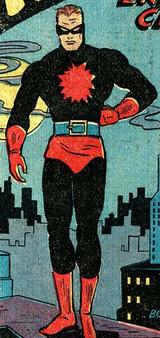Step 1: Background Info
Start with a reference source or a general book to establish the context and provide facts.
General Reference Sources:
Art-Related Reference Sources:
Oxford Art Online - includes Grove Art Online
Step 2: Narrow it Down
Use the reference source to identify main areas of the topic and related issues. Then look for books or articles that deal with that particular idea or issue. After looking up comic books in a reference source, you might have seen that major issues involved are censorship, respect for the medium as an art form, gender stereotypes, and intellectual property battles. Choosing sources in one of these areas will be your next step. See what authors, people, and concepts are mentioned in the reference source and use them as a starting point for step 2.
For more general information that isn't too current, you'll want to start by looking for books. There are two main places for this:
PrattCat - for books here at Pratt
Google Books - for books all over the world
For more specific information or more timely information, you'll want to search for periodicals. Magazines, journals, newspapers, and other publications can be found in our Articles & Databases page.
Try starting with a large, general databases like the ones below:
- General OneFile This link opens in a new windowA general interest periodical resource with a wide range of topics, including education, humanities, law, social science, technology, and more. It has 12,000+ full-text titles of The New York Times from 1985 to present.
- Alexander Street Press This link opens in a new windowASP offers academic streaming media, across subjects such as counseling, anthropology, diversity studies, theatre, current affairs, and the social sciences.
- Avery Index to Architectural Periodicals This link opens in a new windowA comprehensive guide to the current literature of architecture and design, covering 2,500+ international journals and periodical literature.
Knowing where to begin your search
If you've decided that your topic is gender stereotypes in comic books, what's the best place to start? How do you know?
In general, thinking about your audience will give you some idea of where to begin. In this case, it's your professor and other students. For an English paper, they'll probably need a little background info on comic books. Start broad and check out some reference sources.
If you were writing this paper for a class called "A Cultural History of Comics" you wouldn't need to provide as much background info. For a general English class, it's best to start by providing your audience with some context (tell them who this Superhero is) before you get to the specifics (explaining why he wore underwear outside his tights).
Subject Guide
Step 3: Follow the Trail
When you've found one source that works for you, look at what that author used. Looking up sources from the bibliography or works cited in one good resource will usually lead you to many more useful resources. How do you do this?
1. Determine what type of source it is by looking at the citation. If you're not sure what it is, look at a style guide.
The OWL at Purdue is an excellent source for style guides in multiple formats.
2. Where is it? For books, use PrattCat or Google Books.
For articles, start by looking in E-Journals and searching by magazine or journal title.
If you don't have any luck in E-Journals, try Google Scholar or Worldcat.



